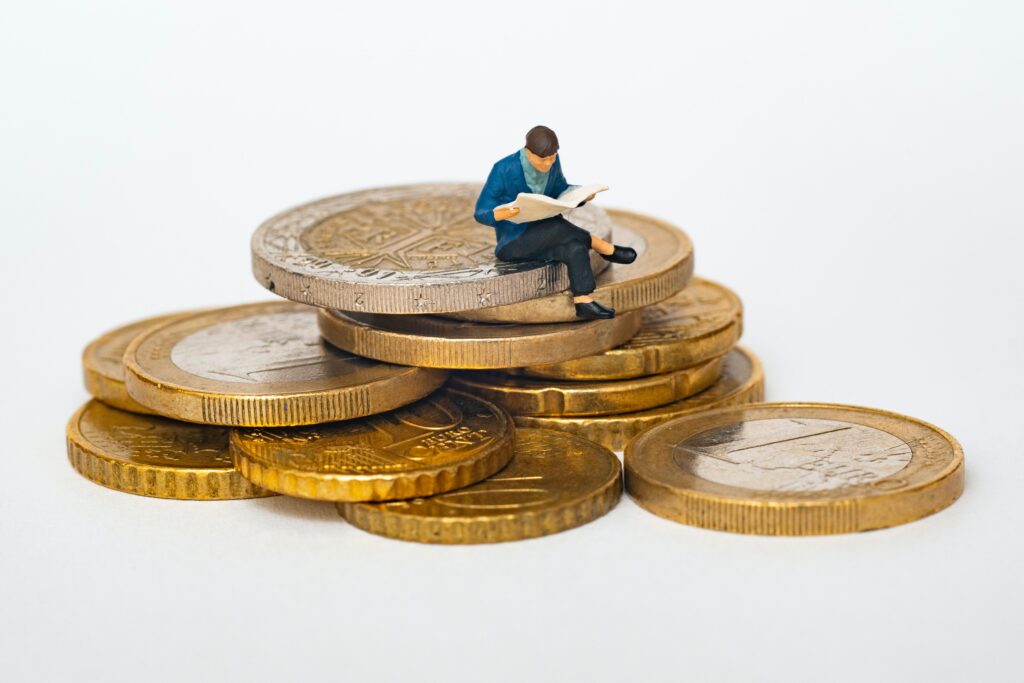According to the Bureau of Labor Statistics, U.S. Labor Department, inflation has soared to a 40-year high as of early 2022, with consumer prices up 7.5% from January 2021 to January 2022. As a result, the average cost of living has increased, shrinking the purchasing power of families across the country. You probably notice it when shopping for groceries or filling up the gas tank. But how is inflation defined, exactly? What causes it? We’ve got your answers.

What Is Inflation?
Inflation is the rate of increase in prices of consumer goods, services, and the cost of living. This significant financial event needs to be accounted for in our earnings, expenditure, and savings plan each year.
Inflation can be determined by various means. The most common for the U.S. is the Consumer Price Index (CPI), which measures the average change in prices paid by urban consumers for a market basket of consumer goods and services.
The CPI considers the costs of these consumer goods and services across various cities and suburbs in America to identify price trends within the economy.
Factors Causing Inflation
There are several factors that cause inflation.
The rate of inflation starts to go up when people are willing and able to pay a higher price for goods. This leads to a rise in production costs of raw materials and ultimately price increases. This generally doesn’t happen right away, but occurs over a period of time. Price changes might seem small at first.
Need-based or want-based products and services are both prone to inflation. The former category may include essentials like food, real estate, utilities and healthcare, while the latter could include desired luxury items like jewelry and cars.
Other factors include:
Demand-Pull Inflation
It occurs when there is a rapid growth in aggregate demand for consumer goods and services, leading to an increase in the prices of said goods and services. This is typically a result of a strong economy; costs increase because businesses must boost their supply to meet the new demand.
So, while it may seem strange, strong economic growth can cause problems if it leads to high inflation. People with higher wages might be able to adjust, but it’s difficult for people on a fixed income.

Cost-Push Inflation
It is caused by increased labor and manufacturing costs, which lead to elevated prices of consumer goods and services. Production costs could include wages and raw materials. The increased manufacturing costs lead to a drop in the supply of goods and services while demand remains stable. Consumers bear the increased production cost when they pay higher prices for the final product or service.
Housing Market Inflation
It results from increased demand for homes in a booming economy. Like the stock market, the housing market has seen volatility recently. As more consumers seek equity in the form of homeownership, buyers can expect to see a subsequent rise in the prices of homes. This is also true for ancillary construction-related products like wood, steel, etc.
The American Federal Reserve and other central banks and their economists monitor inflation. With an inflation target hovering around two percent, the Federal Reserve (sometimes called the Fed) observes the price rise and the rate of the rise to adjust the country’s monetary policy to counter inflation.
In other words, economists look carefully at the percentage change of prices and adjust rates to try to create more price stability. However, they can’t set prices themselves—they can only hope that rate changes set this in motion.
Inflation can cause concern for consumers because money earned and saved decreases in value over time. As a result, individuals lose purchasing power.
Why Is Inflation Increasing?
Major global events are one of the causes of inflation. For example, the COVID-19 pandemic triggered an erratic rise. Consumer demand was lax during the initial phase of the pandemic but has since grown, particularly with more people shopping online.
This increased demand comes with a supply chain crisis: overburdened warehouses and blocked shipping ports prevent goods from being delivered. This means there are shortages on the shelves.
Additionally, housing prices have increased in both homes for sale and rentals. Many companies have exploited the pandemic to enjoy the benefits of rising consumerism and consumer spending.
The federal government boosted the American economy with huge stimulus packages — trillions of dollars — for qualifying families and small businesses throughout the pandemic. The Federal Reserve policy subsequently decreased its interest rates and bought bonds.

What Are the Effects of Inflation?
Inflation affects both consumer prices and the cost of living. As inflation surges, so do the prices of consumer products and services such as groceries, utilities, healthcare, and real estate. The increased prices of goods and services could curtail consumer expenditure, as many families budget a considerable portion of their household income for these necessary items.
One measure of inflation is its overall impact on wages. Unfortunately, while many industries like hospitality are showing a slow and steady recovery following the losses suffered by the pandemic, wages have been slow to keep pace with inflation.